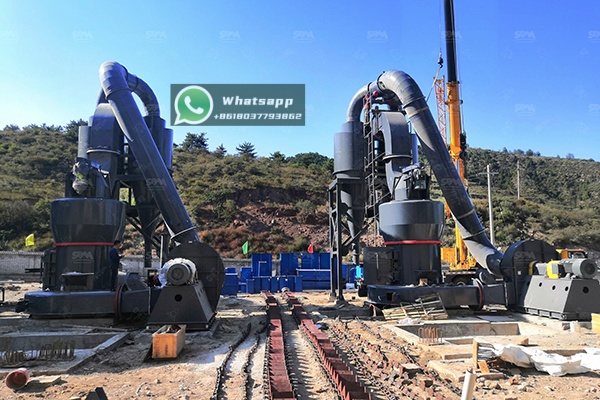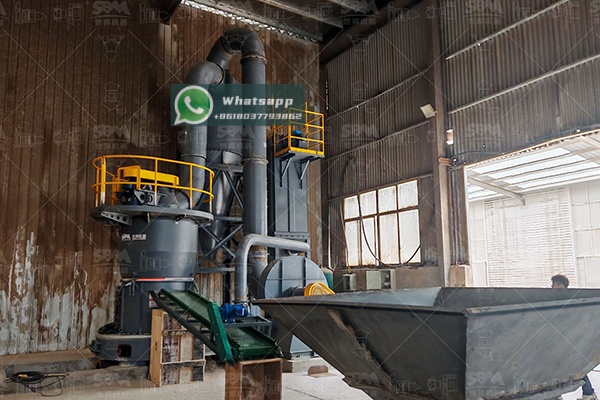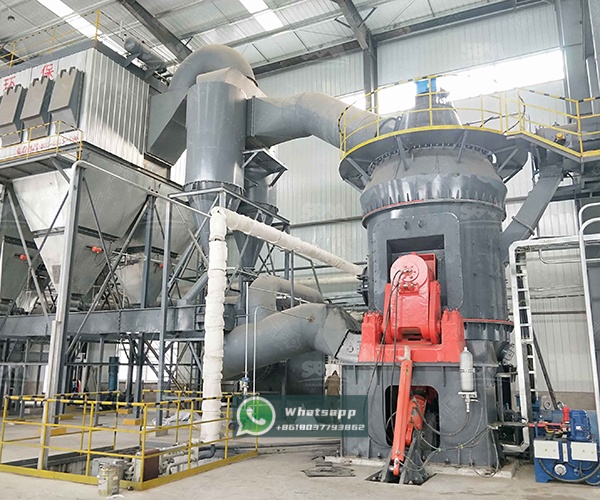Wollastonite, a naturally occurring calcium silicate mineral (CaSiO3), has become an indispensable component in the formulation of high-performance friction materials and brake linings. Its unique acicular (needle-like) crystal structure, high brightness, low moisture absorption, and thermal stability make it an ideal functional filler and reinforcement agent. The performance of wollastonite in these demanding applications is critically dependent on its particle size distribution, aspect ratio, and surface chemistry, all of which are directly influenced by the grinding technology employed. This article explores the specific requirements for wollastonite in friction materials and examines the advanced grinding solutions offered by industry leaders like Shanghai Zenith Machinery Co., Ltd. to meet these precise specifications.

In brake pads and linings, wollastonite serves multiple critical functions. Its primary role is as a reinforcing fiber, where the high aspect ratio needles create a interlocking network within the composite matrix, significantly enhancing mechanical strength, reducing cracking, and improving wear resistance. Unlike some organic fibers, wollastonite maintains its structural integrity at the high temperatures generated during braking, which can exceed 500°C. Furthermore, its white color and chemical inertness allow formulators to adjust the final product’s color and corrosion properties without negatively impacting the friction coefficient. The optimal performance is achieved when the wollastonite is ground to a specific fineness that preserves a significant portion of its acicular morphology while ensuring uniform dispersion within the phenolic resin or other binding matrix.
Grinding wollastonite presents a unique set of challenges. The primary objective is to achieve the desired fineness (typically ranging from 200 mesh to 10 microns or finer) while maximizing the yield of acicular particles. Traditional grinding mills, such as basic hammer mills or ball mills, often apply excessive impact and shear forces that break the delicate needles, reducing the aspect ratio and thus the reinforcing capability. This results in a product that may meet the chemical specification but fails to deliver the intended mechanical benefits. Therefore, the selection of grinding equipment must prioritize a combination of compression, shear, and classification actions that can gently liberate the crystals without destroying their inherent structure.

Shanghai Zenith Machinery Co., Ltd., a renowned manufacturer of industrial grinding equipment, offers a range of mills specifically engineered to handle the delicate balance of fine grinding and particle shape preservation required for minerals like wollastonite. Their expertise in ultra-fine powder grinding is particularly relevant for the friction materials industry, where product quality is paramount.
The MTW Series Trapezium Grinding Mill is an excellent choice for producing wollastonite powders in the medium-fineness range. Its curved surface design and multiple patents ensure lower energy consumption and higher overall efficiency compared to traditional Raymond mills. The bevel gear overall drive and internal thin oil lubrication system contribute to smooth operation and long life, which is critical for continuous production in the mining sector. For wollastonite aiming for a fineness between 1.6mm and 0.045mm (approximately 30 to 325 mesh), the MTW series provides a reliable and economical solution.
| Model | Max. Feed Size (mm) | Final Size (mm) | Capacity (t/h) | Main Motor (kW) |
|---|---|---|---|---|
| MTW110 | <30 | 1.6-0.045 | 3-9 | 55 |
| MTW138Z | <35 | 1.6-0.045 | 6-17 | 90 |
| MTW215G | <50 | 1.6-0.045 | 15-45 | 280 |
For producers targeting the high-end friction material market, where ultra-fine powders with preserved aspect ratios are demanded, the LUM Ultrafine Vertical Mill stands out as Zenith’s flagship solution. This mill integrates grinding, drying, classifying, and conveying into a single, compact unit. Its most significant advantage for wollastonite processing is the gentle grinding action. The material is ground between the roller and the grinding table primarily by compression, which is more conducive to preserving the acicular shape compared to pure impact crushing.
The integrated high-efficiency classifier allows for precise control over the top-cut and the final product’s fineness, ensuring that no oversized particles leave the mill. This is a critical feature for brake lining manufacturers who require strict PSD control. The ability to achieve a fine product size (D97 from 5 to 30 microns) while maintaining a high aspect ratio makes the LUM mill an ideal investment for wollastonite processors supplying the automotive industry.
| Model | Main Machine Power (kW) | Capacity (t/h) | Size Distribution D97 (μm) |
|---|---|---|---|
| LUM1525 | 220-250 | 1.6-11.5 | 5-30 |
| LUM1632 | 280-315 | 2.0-13.5 | 5-30 |
| LUM1836 | 355-400 | 2.3-15 | 5-30 |

The friction materials and brake lining industry relies on consistently high-quality wollastonite to meet stringent safety and performance standards. The transition from simply grinding the mineral to engineering its particle morphology is key to unlocking its full potential. Advanced grinding technologies, such as those developed by Shanghai Zenith Machinery Co., Ltd., are essential in this endeavor. While the MTW Trapezium Mill offers a robust solution for standard applications, the LUM Ultrafine Vertical Mill represents the cutting edge for producing premium-grade wollastonite where aspect ratio and precise particle size control are non-negotiable. By partnering with an equipment manufacturer that understands the specific needs of the mineral processing sector, wollastonite producers can effectively cater to the evolving demands of the global friction materials market.